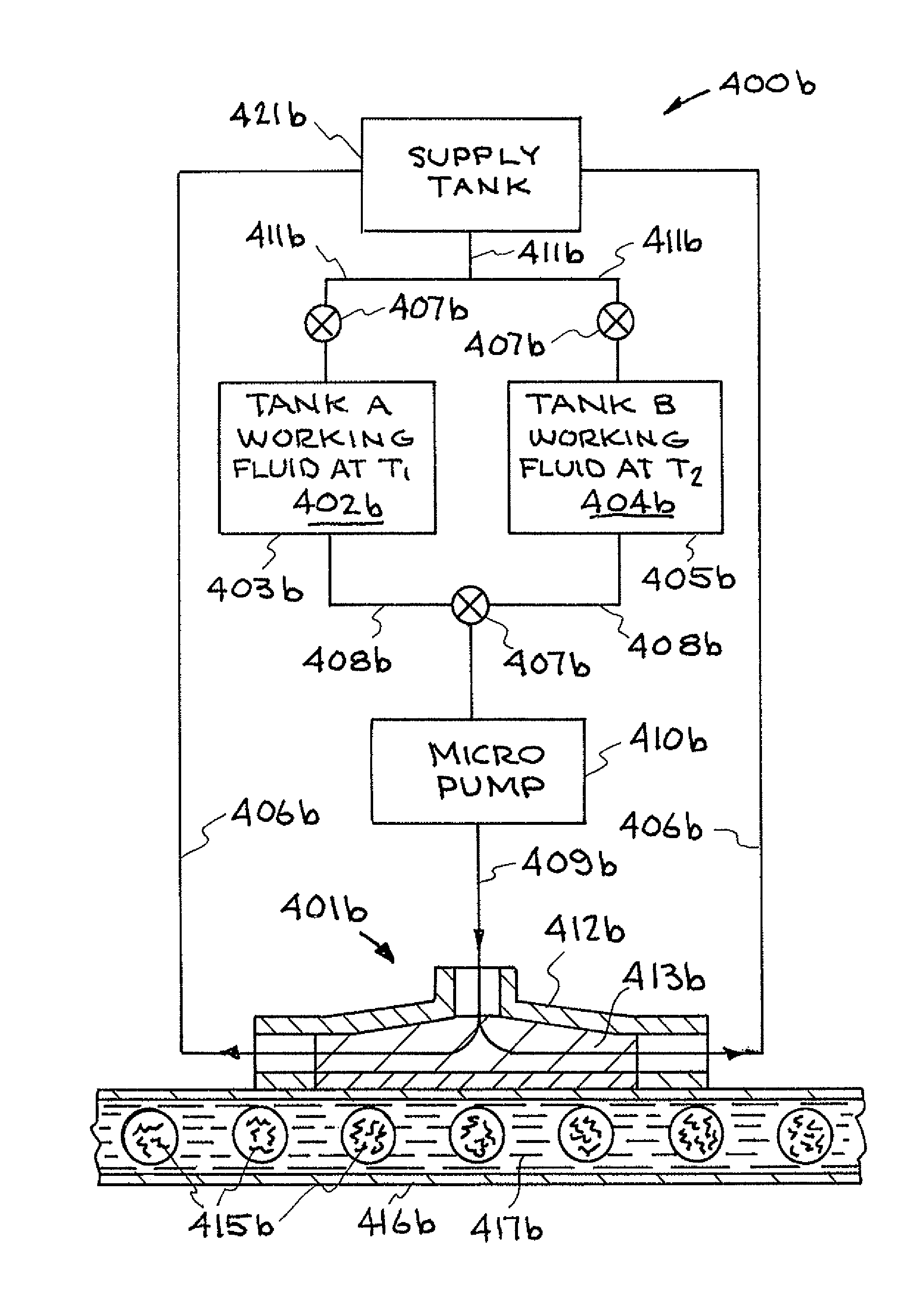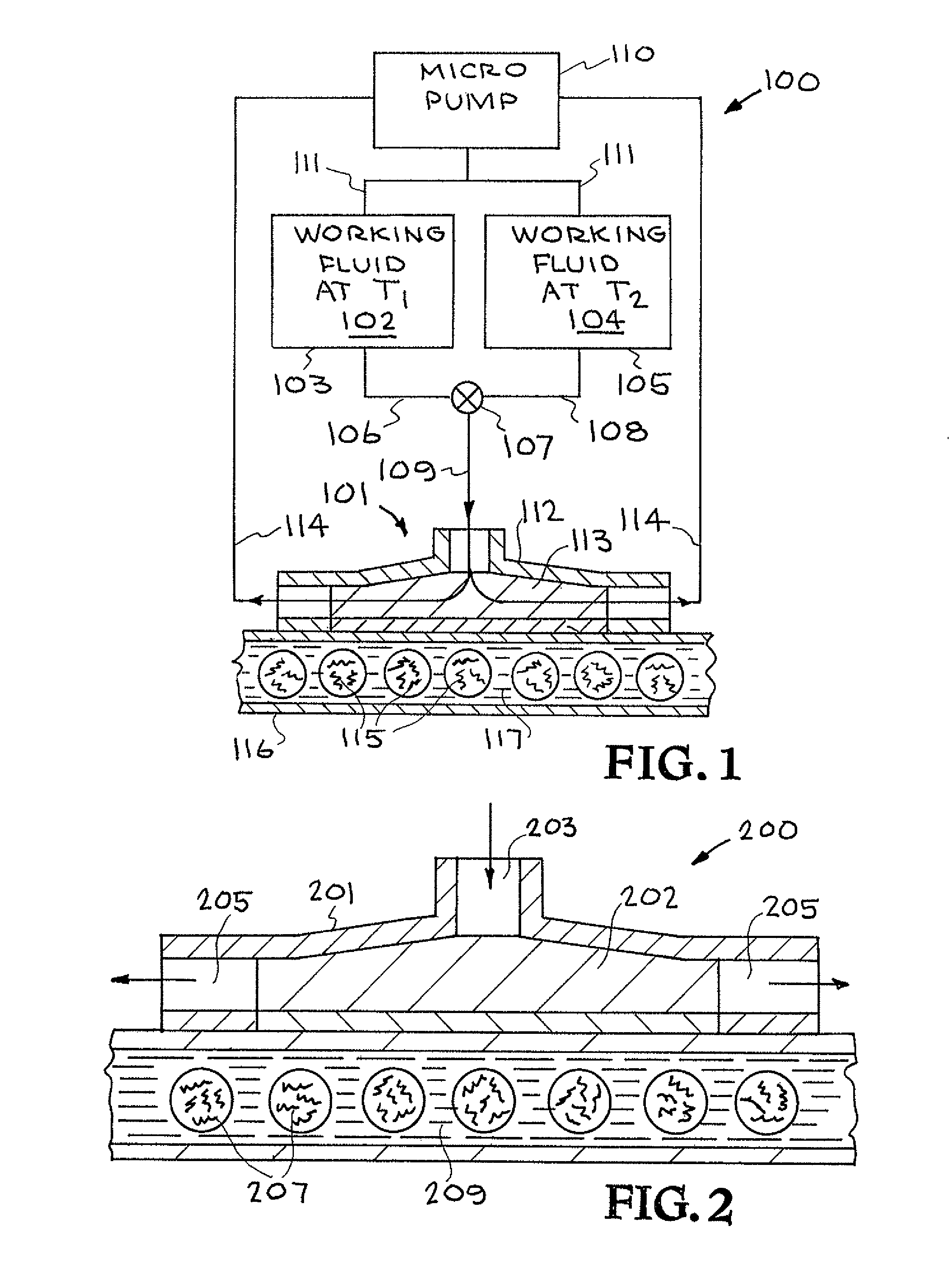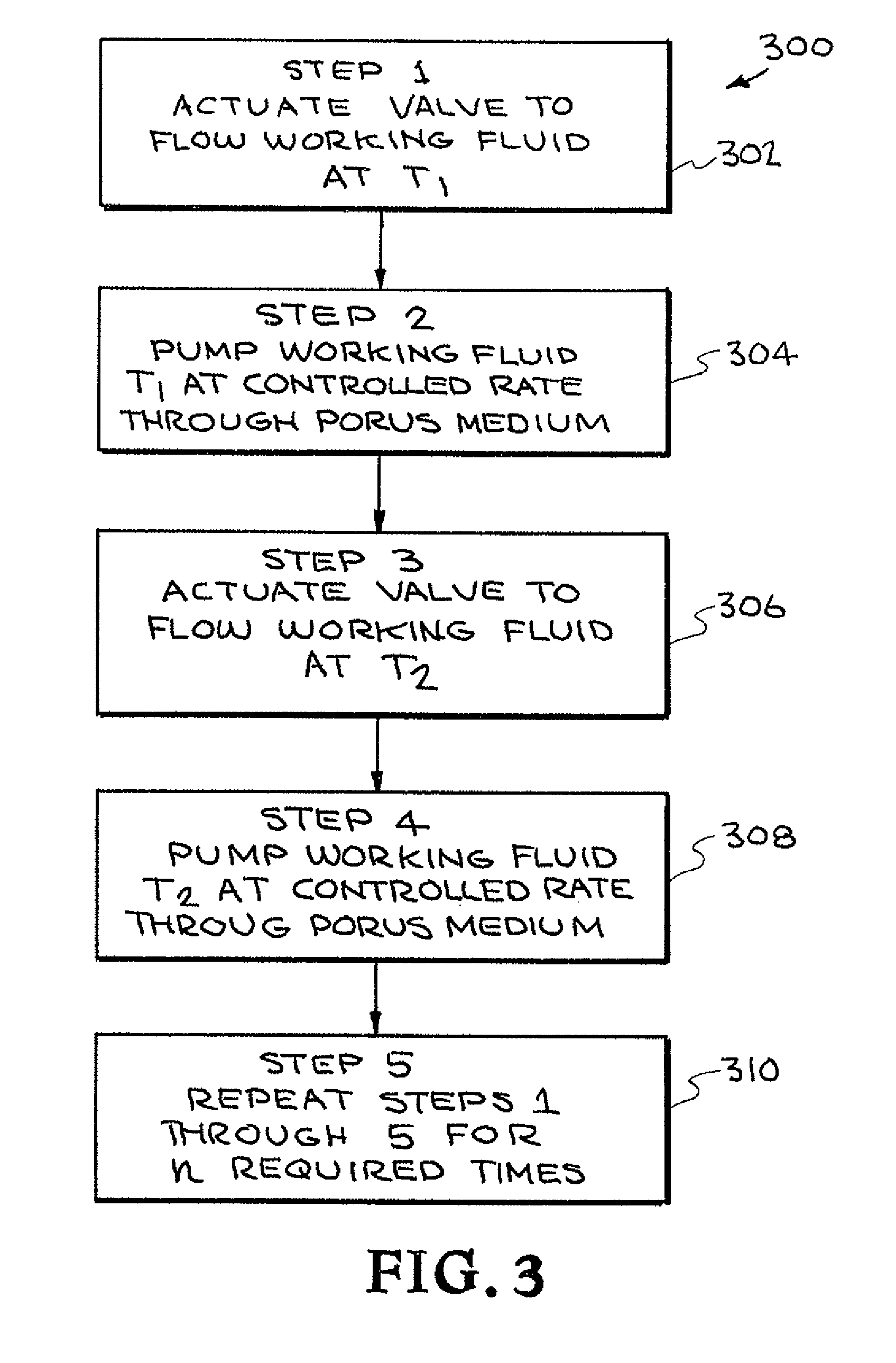Rapid microfluidic thermal cycler for nucleic acid amplification
a microfluidic and thermal cycler technology, applied in the field of thermal cycling, can solve the problems of reducing the total time needed to complete the amplification, affecting the amplification efficiency of the sample, and generating differences in sample temperature,
- Summary
- Abstract
- Description
- Claims
- Application Information
AI Technical Summary
Benefits of technology
Problems solved by technology
Method used
Image
Examples
Embodiment Construction
[0040]Referring to the drawings, to the following detailed description, and to incorporated materials, detailed information about the invention is provided including the description of specific embodiments. The detailed description serves to explain the principles of the invention. The invention is susceptible to modifications and alternative forms. The invention is not limited to the particular forms disclosed. The invention covers all modifications, equivalents, and alternatives falling within the spirit and scope of the invention as defined by the claims.
[0041]Referring now to the drawings and in particular to FIG. 1, one embodiment of a thermal cycling system constructed in accordance with the present invention is illustrated. The system is designated generally by the reference numeral 100. The system 100 will be described as a polymerase chain reaction (PCR) system; however, it is to be understood that the system 100 can be used as other thermal cycling systems.
[0042]PCR is the...
PUM
| Property | Measurement | Unit |
|---|---|---|
| temperatures | aaaaa | aaaaa |
| temperatures | aaaaa | aaaaa |
| temperature | aaaaa | aaaaa |
Abstract
Description
Claims
Application Information
 Login to View More
Login to View More - R&D
- Intellectual Property
- Life Sciences
- Materials
- Tech Scout
- Unparalleled Data Quality
- Higher Quality Content
- 60% Fewer Hallucinations
Browse by: Latest US Patents, China's latest patents, Technical Efficacy Thesaurus, Application Domain, Technology Topic, Popular Technical Reports.
© 2025 PatSnap. All rights reserved.Legal|Privacy policy|Modern Slavery Act Transparency Statement|Sitemap|About US| Contact US: help@patsnap.com



